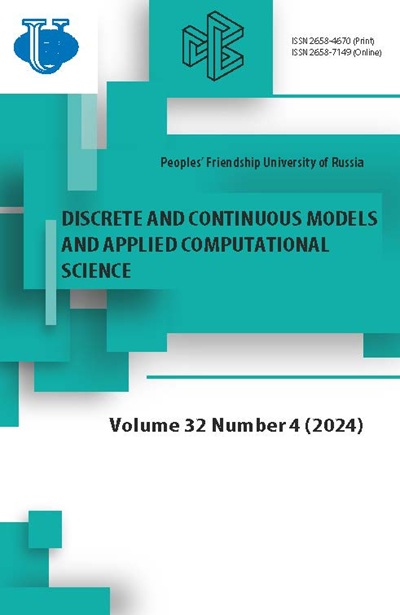Full Text
1. Introduction It should be noticed that since the discovery of mono-atomic carbon layers called graphenes [
1,
2] this material attracted high attention of researchers due to its extraordinary properties concerning magnetism, stiffness and considerable electric and thermal conductivity [
3,
4]. The important connection was revealed with other graphene-based materials: Fullerenes [
5] and carbon nanotubes [
6]. A very simple explanation of these unusual properties of graphene was suggested in [
7], where the idea of massless Dirac-like excitations of honeycomb carbon lattice was discussed, the latter one being considered as a superposition of two triangular sublattices. The further development of this idea was realized in [
8,
9]. The unprecedented raise of interest has emerged to graphene-based materials and especially to moiré super-lattice patterns, this fact being motivated by their unconventional characteristics. In particular, specific magic-angle systems constructed by stacking two or three graphene layers twisted relative to each other have shown superconducting behavior [
10-18]. However, these systems exhibit superconducting properties also for the very strong external magnetic fields (up to 10 T) [
19], and therefore the standard superconductivity model by J. Bardeen, L. Cooper, J. Schrieffer and N. Bogoliubov [
20] appears to be non suitable for the explanation of this fact. Thus, the superconductivity in TTG is likely to be driven by a mechanism that results in non-spin-singlet Cooper pairs. Nevertheless, it can be shown that the phenomenological approach based on the Landau theory of phase transitions [
21] and on the corresponding chiral model of graphene suggested earlier [
8] seems to be well suitable for the description of TTG. 2. Lagrangian density for the chiral model of graphene In accordance with the hexagonal structure of the graphene mono-atomic carbon lattice, the three valence electrons of the atom form strong covalent bonds with the neighbours, but the forth electron belongs to the so-called hybridized state and appears to be “free”. Thus, let us combine scalar
About the authors
RUDN University
Author for correspondence.
Email: rybakov-yup@rudn.ru
ORCID iD: 0000-0002-7744-9725
Scopus Author ID: 16454766600
ResearcherId: S-4813-2018
Professor, Doctor of Sciences in Physics and Mathematics, Professor at the Institute of Physical Research and Technologies
6 Miklukho-Maklaya St, Moscow, 117198, Russian Federation
RUDN University
Email: mails4medina@gmail.com
Exchange student of the Institute of Physical Research and Technologies 6 Miklukho-Maklaya St, Moscow, 117198, Russian Federation

















